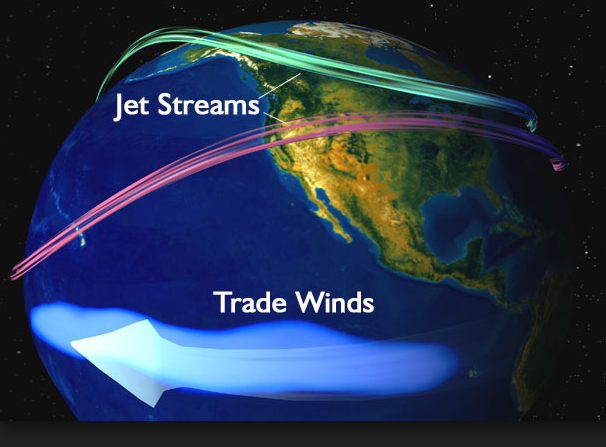AusSMC: A dramatic increase in the strength of the Pacific trade winds (a pattern of easterly winds spanning the tropics) over the past two decades has caused ocean circulation at the equator to speed up, increasing the transport of heat into the deeper ocean while bringing cooler water to the surface.
 The extra heat absorbed by the oceans can help explain the slower rate of warming seen in recent years. The research predicts that, if and when the trade winds slow down, warming will substantially increase, quickly outpacing the recent lower rates.
The extra heat absorbed by the oceans can help explain the slower rate of warming seen in recent years. The research predicts that, if and when the trade winds slow down, warming will substantially increase, quickly outpacing the recent lower rates.
Our colleagues at the AusSMC ran an online briefing with the report author Professor Matthew England. Click the icon below to replay the briefing:
Dr Helen McGregor is an associate research fellow in the School of Earth and Environmental Sciences, University of Wollongong, comments:
“This paper presents a plausible mechanism to explain the slowdown in the rate of global warming over the past 30 years. The study shows that the trade winds blowing from east to west across the tropical Pacific have transferred atmospheric heat to the upper metres of the surface ocean, effectively ‘burying’ the heat there. Their projections of global surface air temperature are very much tied to the strength of the trade winds. And that means that if we have tropical Pacific events such as El Niño, which reduce trade wind strength and affect Australian rainfall, we are likely to see rates of global warming increase.”
Dr Steve Rintoul is Research Team Leader at CSIRO Marine and Atmospheric Research and leader of the Oceans Program at the Antarctic Climate and Ecosystems CRC. He was also Coordinating Lead Author of Chapter 3 of the latest IPCC report, Observations: Oceans. He comments:
“The paper shows that the earth does not warm at a uniform rate because of natural variability of the climate system. As a result, pauses in the rate of warming are expected and observed. The paper helps explain the physical mechanism responsible for recent slower rates of surface warming: changes in winds drive changes in ocean currents and a redistribution of heat in the ocean. The authors show that the same mechanism helps explain the slower warming measured between 1940 and 1975.
“More than 93% of the warming of the planet since 1970 is found in the ocean, according to the IPCC report released last week. If we want to understand and track the evolution of climate change, we therefore need to look in the oceans. The oceans have continued to warm unabated, even during the recent “hiatus” in warming of surface temperature.
“Natural variations of the climate system also mean that climate “trends” estimated over a short period are unlikely to reflect long-term changes. A decade or two of slower (or faster) warming does not tell us anything about long-term climate change.”
UK Science Media Centre comments
Professor Richard Allan, Professor of Climate Science at the University of Reading, comments:
“This study builds on previous research suggesting that the oceans are absorbing large amounts of heat below the surface layers and that strengthening Pacific winds are the primary cause. These changes are temporarily masking the effects of man-made global warming.
“It is likely that the current slowdown is only a temporary reprieve from rapid increases in global temperatures. Measurements from satellites and deep ocean buoys show that the planet is absorbing more heat than it is radiating out to space and the heat is building up in the oceans. This new research suggests that when the trade winds weaken again, the planet can expect rapid warming of the surface to resume, as greenhouse gas concentrations continue to rise.
“We don’t know what is causing these unprecedented changes, but the implications could be substantial. It would be surprising if these large changes in atmospheric and ocean circulation over the last two decades, including also a potentially long-term decline in the Atlantic ocean circulation, have not already disrupted our weather patterns.”
Professor Piers Forster, Professor of Climate Change at the University of Leeds, comments:
“This is a nice paper that gives further evidence that the slowdown is primarily due to the ocean and its interaction with the atmosphere. The ocean has likely been absorbing extra heat over the last 15 years. It will not be kind to us forever though; beyond 2020 we fully expect the greenhouse gas driven global warming trend to be back on track.”
